SkyMapper
 |  |
Image credit: Kwon O Chul
Description
The SkyMapper Southern Survey (SMSS) is a 6-band optical survey conducted with the Australian National University's 1.3m SkyMapper Telescope at Siding Spring Observatory in Australia. The telescope has a 32-CCD mosaic camera, with 268 million pixels, covering 2.4°x2.4°. The SMSS filter set (Bessell et al. 2011) is comprised of u, v, g, r, i, and z, with differences from the SDSS and LSST/VRO bandpasses that facilitate novel scientific applications.
The skymapper_dr4.master table has been crossmatched against our default reference datasets within a 1.5 arcsec radius, nearest neighbor only. These tables will appear with x1p5 in their name in our table browser. Example: skymapper_dr4.x1p5__master__gaia_dr3__gaia_source.
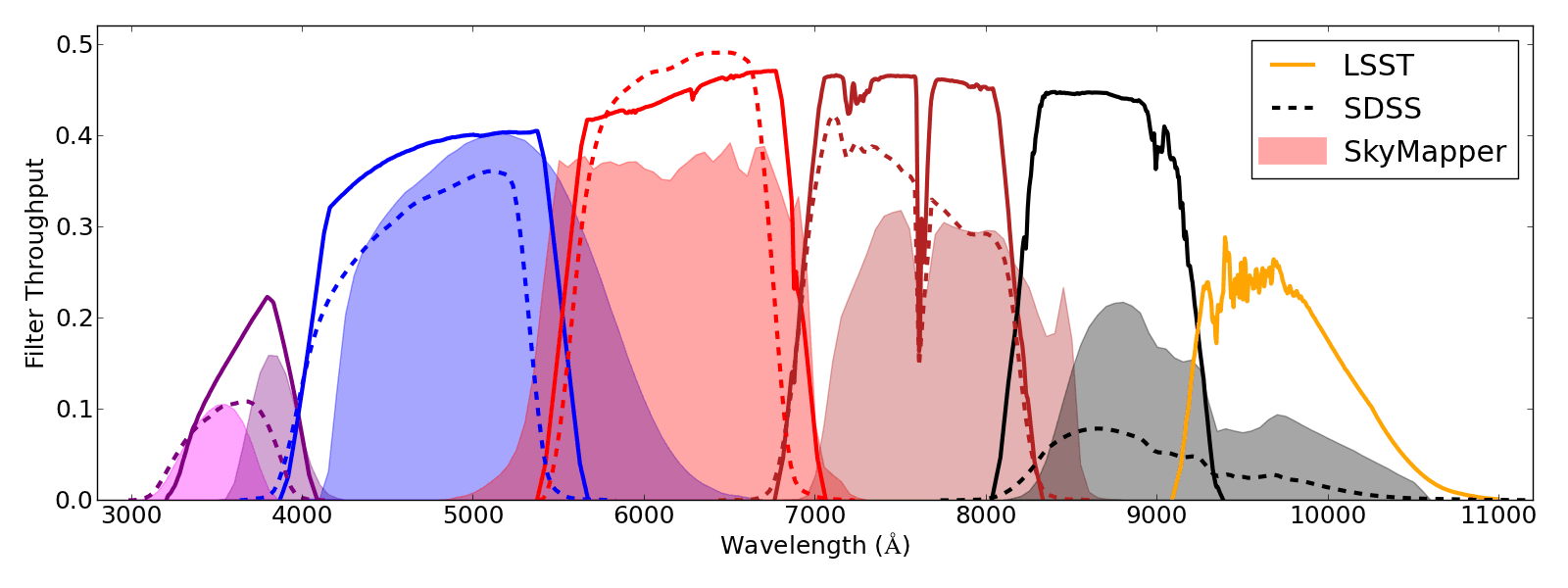
Data Releases
SkyMapper DR4
SMSS published its Fourth Data Release (DR4) in February 2024, covering from the South Celestial Pole to Declinations of +16°, with some fields observed up to +28°. Approximately 700 million unique sources have been observed from 15 billion photometric data points measured from over 400,000 images acquired between March 2014 and September 2021.
The typical 10-sigma depths for each field range between 18.5 and 20.5 mag, depending on the filter, but certain sky regions include longer exposures that reach as deep as 22 mag in some filters.
For more information about SMSS and DR4, please visit: https://skymapper.anu.edu.au/ or consult the SMSS DR4 paper (Onken et al. 2024).
SkyMapper DR4 at a Glance
| Filter | Central Wavelength (nm) | Filter FWHM (nm) | Typical Saturation (ABmag) | 10-sigma Depth (ABmag) | Median Seeing (arcsec) |
|---|---|---|---|---|---|
| u | 350 | 43 | 8.9 | 18.6 | 3.15 |
| v | 384 | 31 | 8.2 | 18.9 | 3.00 |
| g | 510 | 157 | 9.4 | 20.5 | 2.80 |
| r | 617 | 158 | 9.4 | 20.2 | 2.63 |
| i | 779 | 141 | 9.5 | 19.4 | 2.54 |
| z | 916 | 84 | 9.6 | 18.6 | 2.49 |
SkyMapper DR4 Coverage Maps:
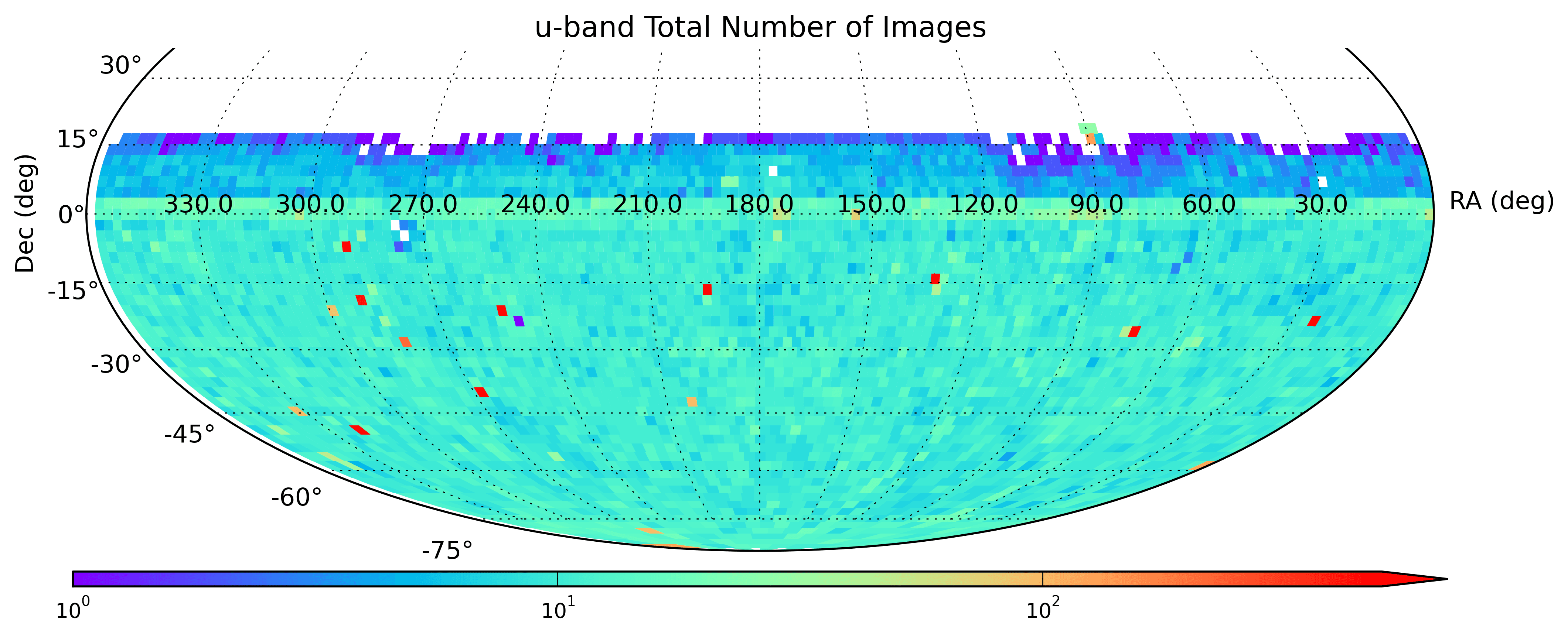
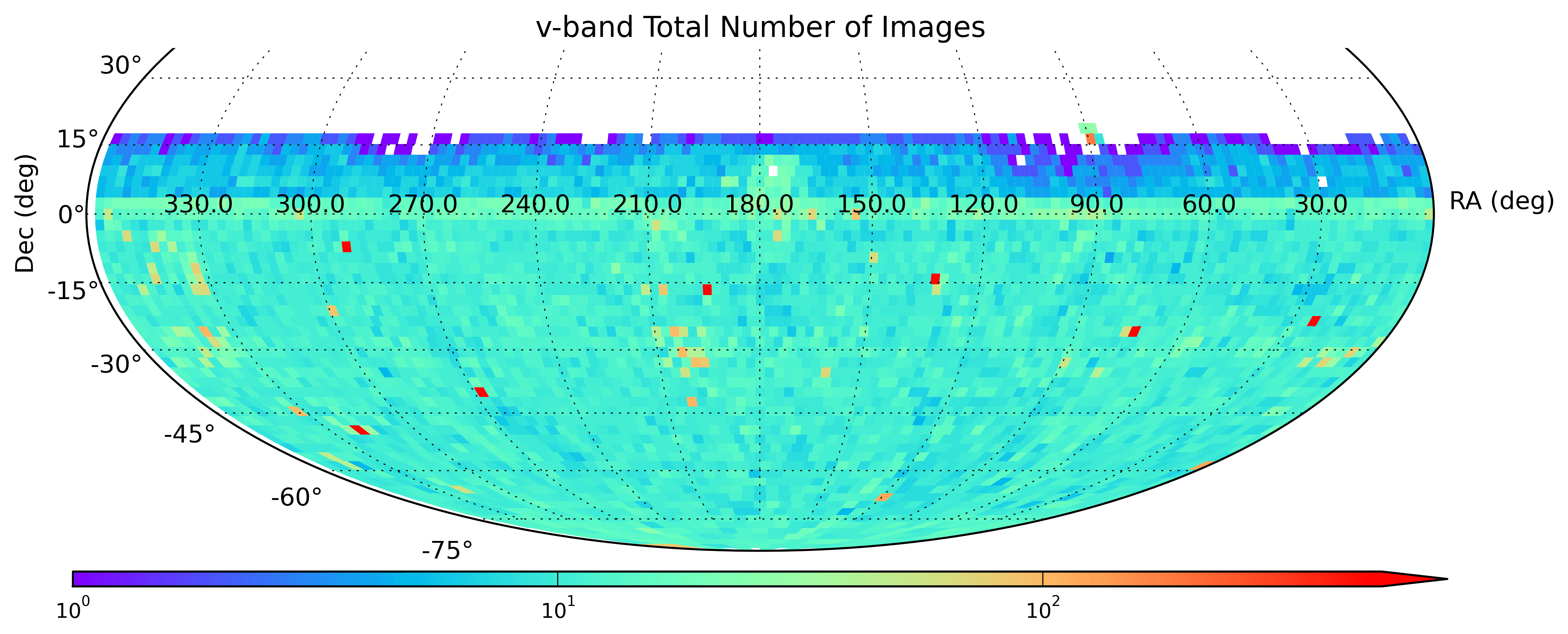
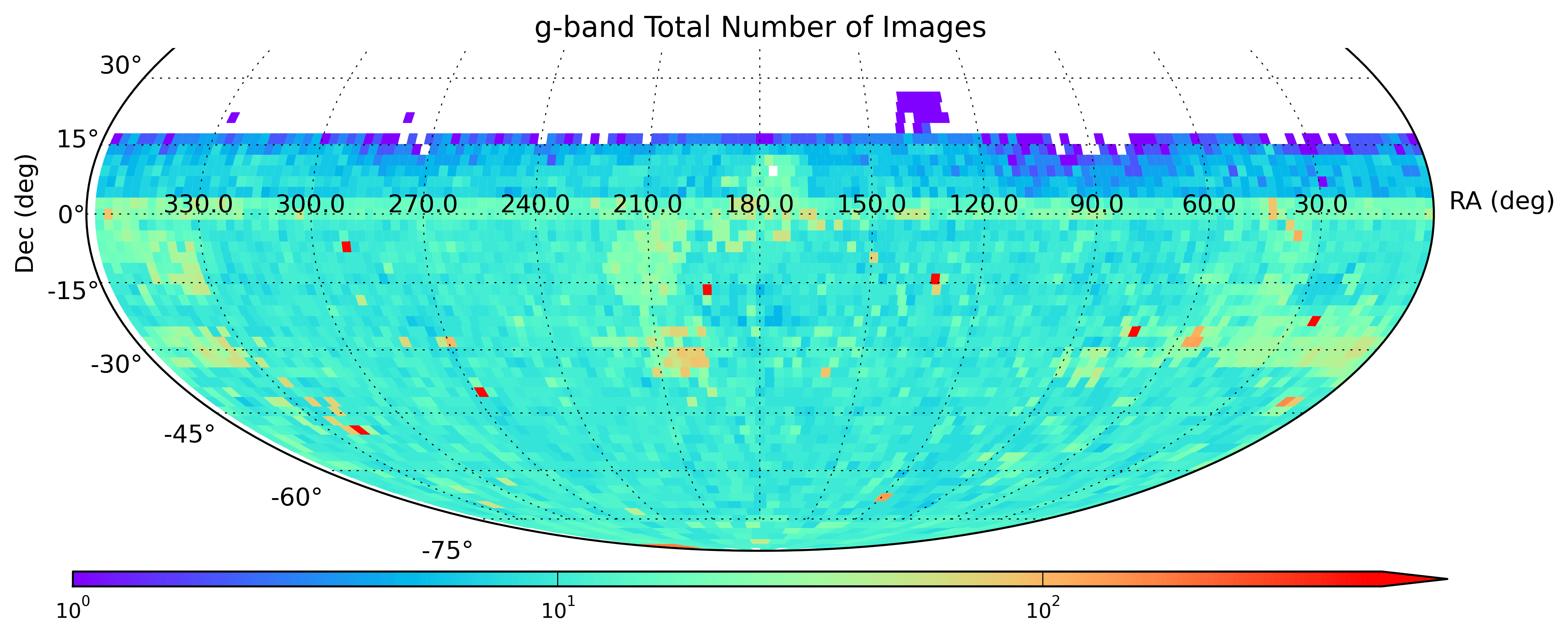
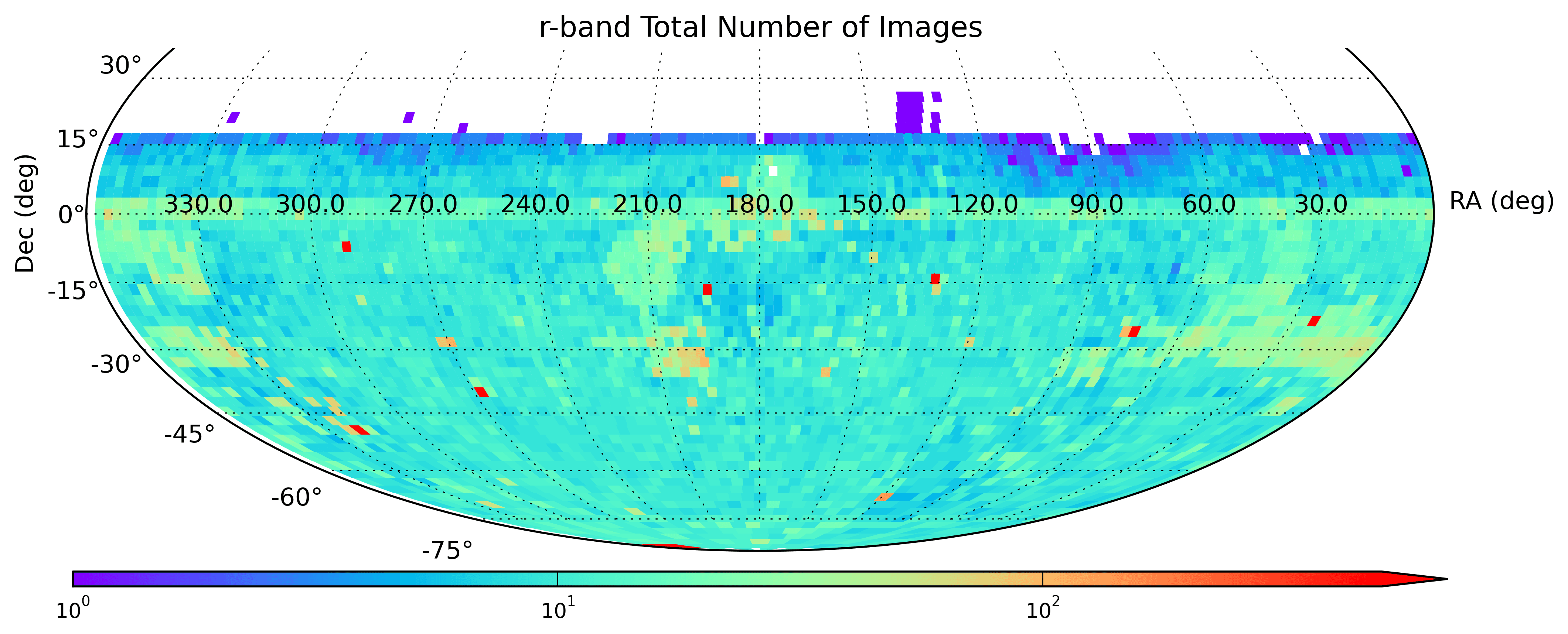
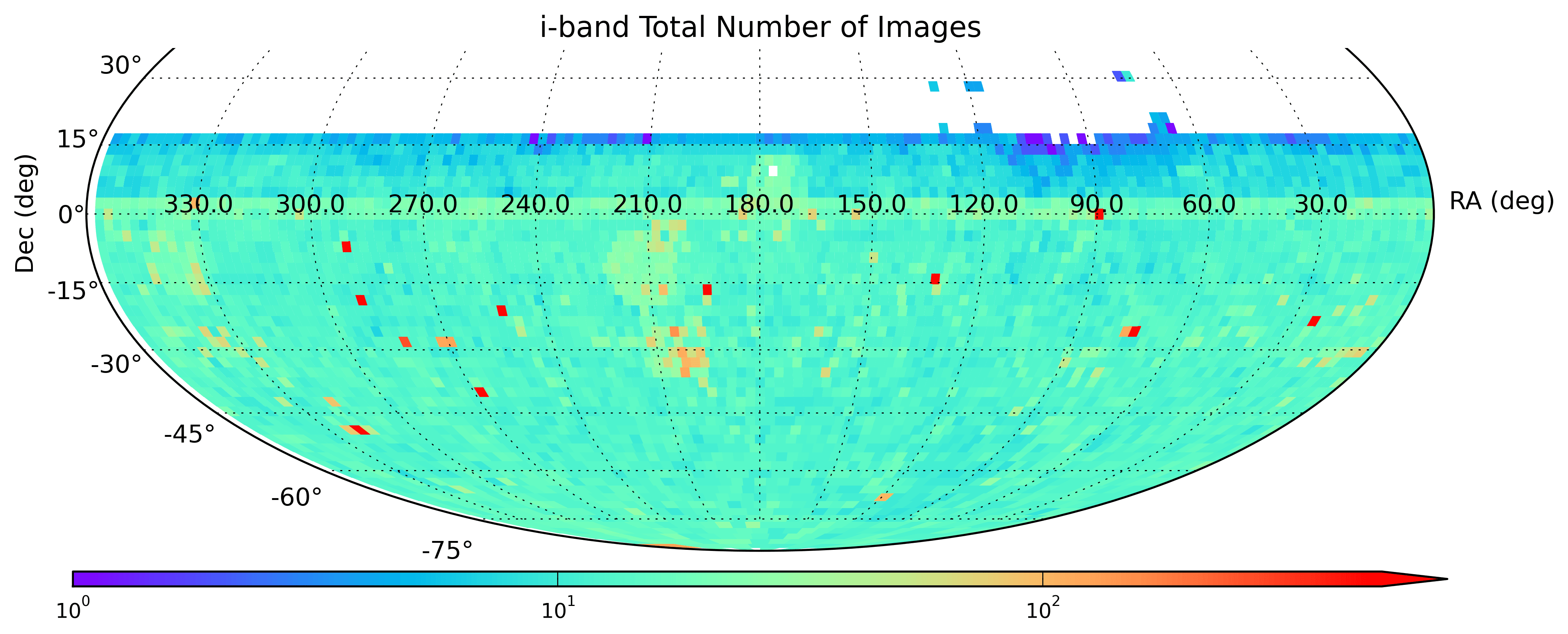
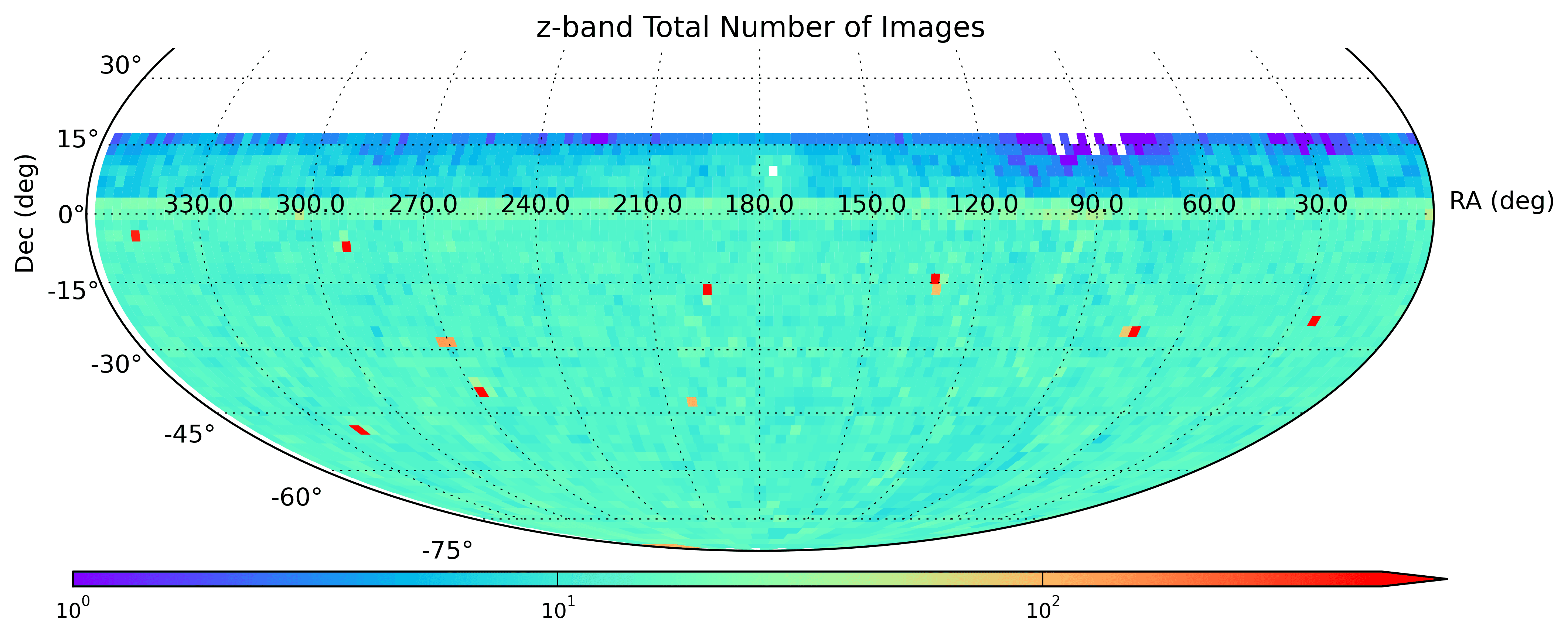
Data Reduction
Full details of the DR4 data reduction can be found in the SkyMapper DR4 paper (Onken et al. 2024). DOI: 10.25914/5M47-S621.
Notable features of the SkyMapper DR4 data reduction include Gaia-based astrometric solutions derived across each mosaic image; PCA-based fringe removal in i and z bands; and an entirely new photometric zero-point calibration anchored to synthetic photometry calculated from low spectral resolution Gaia BP/RP spectra.
The Gaia XP synthetic photometry dramatically improves the photometric calibration of the u- and v-band images compared to previous SkyMapper data releases. Careful treatment of the u-band calibration was still required because the XP spectra do not fully cover the wavelength range of the filter, and the systematic uncertainties of the Gaia spectral reconstructions are large at the blue end. Nevertheless, the new photometric calibration naturally resolves trends with reddening and sky location that were identified in prior DRs (e.g. Huang et al. 2021).
PSF photometry is estimated by a series of nested apertures, with aperture corrections fitted to a gradient across each CCD. The photometric uncertainties are estimated from the weighted mean of the outlier-clipped set of measurements. The range of observed magnitudes per filter is also recorded for each source.
Data Access
 Figure: Object number density (per square degree) in Mollweide projection for SkyMapper in Galactic coordinates.
Figure: Object number density (per square degree) in Mollweide projection for SkyMapper in Galactic coordinates.
The SkyMapper data are accessible by a variety of means:
Data Lab Table Access Protocol (TAP) service
TAP provides a convenient access layer to the SkyMapper catalog database. TAP-aware clients (such as TOPCAT) can point to https://datalab.noirlab.edu/tap, select the skymapper_dr4 database, and see the database tables and descriptions. You can also view the SkyMapper tables and descriptions in the Data Lab table browser.
Data Lab Query Client
The Query Client is available as part of the Data Lab software distribution. The Query Client provides a Python API to Data Lab database services. These services include anonymous and authenticated access through synchronous or asynchronous queries of the catalog made directly to the database. Additional Data Lab services for registered users include personal database storage and storage through the Data Lab VOSpace.
The Query Client can be called from a Jupyter Notebook on the Data Lab Notebook server. Example notebooks are provided to users upon creation of their user account (register here), and are also available to browse on GitHub at https://github.com/astro-datalab/notebooks-latest.
Jupyter Notebook Server
The Data Lab Jupyter Notebook server (authenticated service) contains examples of how to access and visualize the SkyMapper catalog:
Acknowledgments
All users are required to acknowledge the source of the data with an appropriate citation in their publications, using the following text:
"SkyMapper is owned and operated by The Australian National University's Research School of Astronomy and Astrophysics. The SkyMapper Southern Survey has been funded in part through ARC LIEF grant LE130100104 from the Australian Research Council, awarded to the University of Sydney, the Australian National University, Swinburne University of Technology, the University of Queensland, the University of Western Australia, the University of Melbourne, Curtin University of Technology, Monash University and the Australian Astronomical Observatory. The SkyMapper Southern Survey dataset has been produced with the support of the National Computational Infrastructure (NCI) in Canberra, Australia."
